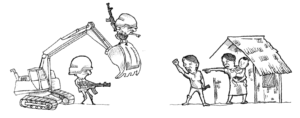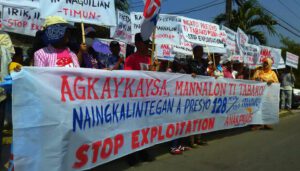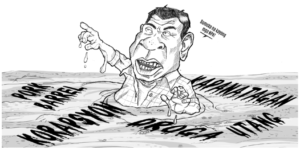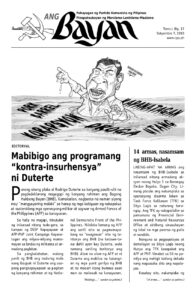West Papuans' struggle for national liberation

Thousands of West Papuans have continuously staged massive demonstrations since August 17. They mounted their rallies in conjunction with the commemoration of the national independence day in Indonesia to demand national liberation and cessation (separation from Indonesia as an independent nation).
Instead of addressing their demands, the Indonesian government deployed an additional 1,200 military and police operatives in the province to violently suppress the demonstrations. On September 3, at least two Papuan students were killed when paramilitary elements attacked their dormitory. Similarly, six were killed, including a child, while more than a dozen were wounded, when Indonesian troops strafed and dropped teargas grenades on the protesters in Deiya on August 28. These series of attacks are part of the continuing genocide campaign of the Indonesian state against Papuans.
History of foreign intervention
West Papua (formerly Netherlands New Guinea) was a part of the Dutch East Indies (presentlyz Indonesia) which was colonized by the Netherlands since 1880. After recognizing Indonesia’s independence in 1949, the Dutch government refused to let go of its hold over West Papua to ensure its economic interests in the region.
But in the 1960s, former US President John F. Kennedy plotted the transfer of West Papua to Indonesia in favor of the local ruling class in the latter. In 1969, a referendum was held wherein Papuans were supposedly allowed to vote for or against West Papua’s integration to the republic of Indonesia. Indonesian soldiers handpicked 1,025 Papuans to participate in the referendum and coerced them to vote for integration.
The integration ensured the free entry of local and multinational mining and plantation companies and their plunder of West Papua’s natural resources. Among these are the US-based Freeport and Australia-based Rio Tinto, companies that are notorious for destroying the environment. Japanese companies are also at the forefront in denuding the forests and depleting the natural gas (together with US companies) in the island. Meanwhile, big compradors and Indonesian capitalists are grabbing the ancestral lands of Papuans as sites for large commercial plantations.
Decades-long struggle
The West Papuans’s aspiration for self-determination and national liberation was clear from the very beginning. In 1965, they founded the Free Papuan Movement, an armed group of the New Guinea Raad, the West Papuan people’s government which they established in 1961. In 2015, the Melanesian Spearhead Group, an organization of countries in the Oceania subregion, recognized the coalition of Papuan groups under the United Liberation Movement of West Papua.
To suppress the Papuan people’s struggle, the province has been continuously placed under de facto martial law. With more than 45,000 Indonesian troops, it is considered the most militarized province in the country. Among those deployed here are Konstrand Commandos who were trained, armed, and funded by the US and Australia.
Intense militarization results in genocide and massive eviction of Papuans. Since 1969, more than 100,000 Papuans have been killed, while tens of thousands have fallen victim to other human rights violations.
In the face of worsening foreign intervention in their ancestral lands and suppression of their rights, the West Papua National Liberation Army continues on waging guerrilla warfare to achieve national liberation.




